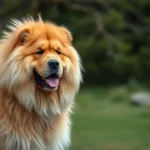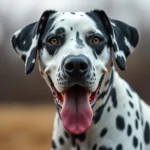
Introduction
Dog breeds have captivated human hearts for centuries, with each breed exhibiting unique characteristics, histories, and temperaments. Among the most popular breeds are the Doberman and the Great Dane. Both breeds stand out in their own right, yet they embody distinct traits that appeal to different types of dog owners. Understanding these breed characteristics is essential for anyone considering adding a furry companion to their family. This article will provide a thorough comparison between the Doberman and the Great Dane, exploring their histories, physical characteristics, temperaments, health considerations, and more.
Breed Overview
Doberman
The Doberman Pinscher was developed in the late 19th century by a tax collector named Karl Friedrich Louis Dobermann in Germany. He aimed to create a loyal and protective canine companion to assist him during his rounds. This breed has a strong, muscular build and is renowned for its intelligence and versatility.
General Characteristics:
– Size: Dobermans typically stand between 24 to 28 inches tall at the shoulder.
– Weight: They usually weigh from 60 to 100 pounds.
– Coat: Their short, sleek coat comes in several colors, including black, red, blue, and fawn, often with distinctive rust markings.
Temperament: Dobermans are known for their loyalty and protective instincts. They are highly intelligent, making them easily trainable. However, they require early socialization to curb any tendencies toward aggression.
Lifespan: The average lifespan of a Doberman is around 10 to 13 years.
Great Dane
The Great Dane, often referred to as the “gentle giant,” has origins that trace back to ancient times. Likely developed from mastiff-type dogs, they were initially bred for hunting large game and as guard dogs.
General Characteristics:
– Size: Great Danes are one of the tallest dog breeds, standing between 28 to 34 inches tall.
– Weight: They typically weigh between 110 to 175 pounds.
– Coat: Their coat is short and smooth, available in several colors, including fawn, brindle, blue, black, and harlequin.
Temperament: Great Danes are known for their friendly and affectionate nature. Despite their size, they are often gentle and good with children, making them excellent family pets.
Lifespan: The average lifespan of a Great Dane is shorter than that of a Doberman, ranging from 7 to 10 years.
Physical Characteristics
Size and Weight Comparison
Both breeds exhibit significant differences in size.
- Doberman:
- Height: 24-28 inches
-
Weight: 60-100 pounds
-
Great Dane:
- Height: 28-34 inches
- Weight: 110-175 pounds
The Great Dane is substantially larger than the Doberman, which can impact living arrangements and the type of care required.
Coat and Grooming Needs
Dobermans have a short, dense coat that is relatively low maintenance. They require minimal grooming, with occasional brushing to remove dead hair and keep their coat shiny.
Great Danes also have a short coat, but their larger size means they shed more hair overall. Regular brushing is necessary to manage shedding. Both breeds are relatively clean and have lower grooming needs compared to long-haired breeds.
Temperament and Behavior
Doberman Temperament
The Doberman is incredibly loyal and protective of its family, making it an excellent guard dog. They are highly intelligent and thrive when given tasks to complete, which makes them highly trainable.
- Socialization Needs: Early socialization is crucial to ensure that they grow into well-rounded adults. Without proper exposure to various environments, people, and other animals, they may develop aggressive tendencies.
Great Dane Temperament
The Great Dane is often described as a gentle giant. They are affectionate and friendly, enjoying the company of both humans and other pets.
- Socialization and Training Considerations: Though they are typically easy-going, Great Danes require consistent training and socialization to manage their size and energy levels. They can be prone to jumping up, which may be overwhelming due to their size.
Health Considerations
Common Health Issues in Dobermans
Despite their robust nature, Dobermans are prone to certain health issues:
- Hip Dysplasia: A common genetic condition in large breeds.
- Dilated Cardiomyopathy: A heart condition that affects the breed significantly.
Preventive care, including regular vet check-ups and a healthy diet, is essential for monitoring these conditions.
Common Health Issues in Great Danes
Great Danes face their own set of health challenges:
- Bloat: A life-threatening condition where the stomach fills with gas and twists.
- Hip Dysplasia: Like Dobermans, they are also susceptible to this genetic condition.
Regular veterinary visits and monitoring their diet can help catch issues early.
Exercise and Activity Needs
Exercise Requirements for Dobermans
Dobermans require significant daily exercise to maintain their health and happiness.
- Daily Routines: At least 60-90 minutes of exercise per day, including walks, runs, and playtime.
- Suitable Environments: They thrive in homes with yards but can adapt to apartment living if given adequate exercise.
Exercise Requirements for Great Danes
Great Danes also need regular exercise, though their requirements may be slightly less intense due to their size.
- Daily Routines: About 30-60 minutes of moderate exercise daily, which can include walks and gentle playtime.
- Suitable Environments: They need space to move comfortably, making larger homes or those with yards preferable.
Training and Obedience
Training Dobermans
Training a Doberman can be an enjoyable experience due to their intelligence.
- Recommended Training Methods: Positive reinforcement techniques work best. Consistent training sessions will yield the best results.
- Socialization Techniques: Early exposure to various situations, animals, and people is crucial.
Training Great Danes
Great Danes can also be trained effectively with the right approach.
- Recommended Training Methods: Positive reinforcement is key, and training should start early.
- Socialization Techniques: They should be introduced to diverse environments and experiences to help manage their size and energy.
Living Arrangements
Ideal Living Conditions for Dobermans
Dobermans are adaptable but thrive best in homes where they have space to engage in physical activities.
- Space Requirements: While they can live in apartments, they need daily outdoor exercise and playtime.
- Family Dynamics: They are excellent companions for active families and individuals who can dedicate time to their training and exercise.
Ideal Living Conditions for Great Danes
Great Danes require ample space due to their size.
- Space Requirements: They do best in homes with large yards, but they can adapt to smaller spaces as long as they receive enough exercise.
- Family Dynamics: Great Danes are great for families with children, thanks to their gentle nature.
Cost of Ownership
Initial Costs
When considering a new pet, the initial costs can vary for both breeds.
- Purchase Price: Dobermans typically range from $1,500 to $2,500, while Great Danes can cost between $1,000 to $3,000.
- Initial Setup Costs: Both breeds require essential items such as food, bedding, and toys, which can add an additional $300 to $500.
Ongoing Costs
Ongoing costs must also be considered when choosing between the two breeds.
- Food and Dietary Needs: Dobermans may require higher-quality food due to their active lifestyle, averaging $50 to $100 per month. Great Danes, being larger, can cost $75 to $150 monthly.
- Veterinary Care and Insurance: Regular vet visits and potential health issues can lead to significant expenses, with insurance plans averaging $30-$60 monthly for both breeds.
- Grooming and Maintenance Costs: Minimal grooming costs for both breeds, averaging around $20 to $50 monthly.
Conclusion
In summary, the Doberman and Great Dane each possess unique qualities that make them appealing to different types of dog owners. The Doberman is an intelligent, loyal protector, while the Great Dane is a gentle giant known for its affectionate nature. When deciding between the two, potential owners should consider their lifestyle, living arrangements, and specific needs of each breed.
Both breeds require a commitment to exercise, training, and health care, but they reward their owners with companionship and loyalty. Ultimately, understanding the differences and similarities between the Doberman and Great Dane can help prospective owners make an informed decision that aligns with their personal preferences and lifestyle.
FAQs
Doberman vs Great Dane: Which breed is better for families?
Both breeds excel in family environments, but the Great Dane is particularly known for its gentleness with children. The Doberman requires more training and socialization to ensure its protective nature is managed.
How do these breeds compare in terms of lifespan?
The Doberman generally lives longer, averaging 10-13 years, while the Great Dane has a shorter lifespan, averaging 7-10 years.
Are Dobermans or Great Danes more prone to health issues?
Both breeds have specific health concerns, with Dobermans being prone to heart conditions and Great Danes facing risks like bloat. Regular vet visits are crucial for both breeds.
What is the average lifespan of each breed?
The average lifespan of a Doberman is 10-13 years, while Great Danes typically live 7-10 years.
Can both breeds live in apartments?
Both breeds can adapt to apartment living, but they need sufficient daily exercise. Dobermans can manage better in smaller spaces if exercised regularly, whereas Great Danes may require more space due to their size.









